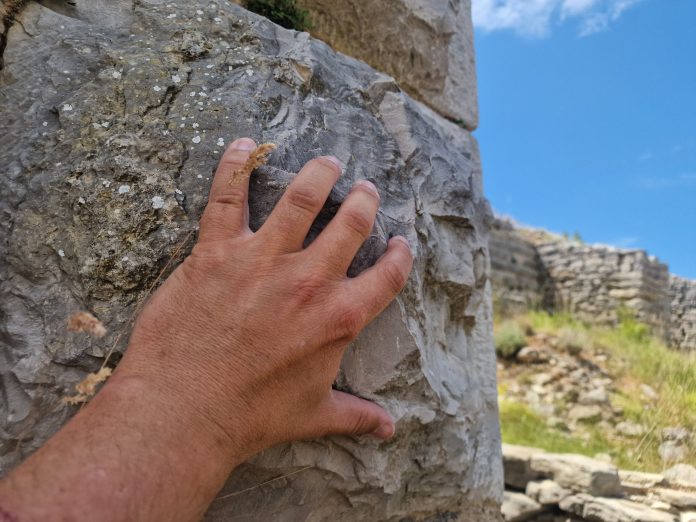Where Stones Still Speak
There is a silence in stonework — the kind of silence that holds memory, not emptiness.
In Croatia, that silence is everywhere.
It lingers in the cracked walls of ancient fortresses, the polished thresholds of Roman palaces, the abandoned quarries of Brač… and even in the quiet chiseling of a teenage apprentice in Pučišća today.
This is not just the story of Croatian stone.
It is the story of a sacred craft passed from hand to hand across thousands of years — from forgotten builders of megaliths to Roman imperial architects, to modern students still learning to listen to the stone.
Let’s follow the trail together.
The Prehistoric Origins of a Hidden Art
Before Diocletian ruled.
Before Caesar marched.
Before Latin ever echoed in Dalmatia…
There were other hands.
On hilltops like Varvaria (modern-day Bribirska Glavica), prehistoric builders raised massive stone walls, forming an acropolis that predates written history. Their purpose? Unknown. Their identity? Forgotten. But their work remains — stone blocks carefully positioned without mortar, still standing after thousands of winters.
Further inland, in what is today Bosnia and Herzegovina, lies Daorson, the ancient capital of the Daorsi tribe. The site stuns archaeologists with its Cyclopean walls — limestone blocks so enormous and perfectly aligned that many compare them to Mycenaean Greece. How this technique reached the Balkans is still debated. The tools? The knowledge? The vision? All remain part of the mystery.
And even on Brač, long before Roman ships arrived, early inhabitants were already building enclosures and ceremonial sites with stone — signs of an indigenous tradition of stonework rooted in the rhythms of the island itself.
This was no simple labor.
It was a language, an intuitive science, a ritual.
Rome and the Rise of the Imperial Quarry
When the Romans arrived, they didn’t just conquer — they absorbed.
They recognized excellence when they saw it.
The island of Brač became one of the empire’s most prized sources of stone.
In the quarries of Rasohe and Plate, Roman engineers supervised the extraction of limestone so white, so fine, it became a preferred material for palaces, temples, and city gates across the empire.
Around 295 AD, an emperor born in Dalmatia — Diocletian — ordered a monumental palace to be built near the sea. His builders turned to Brač.
Stone by stone, block by block, the Palace of Diocletian rose. Not just a home for retirement — but a fortress, a statement, a sacred geometry carved in limestone.
Brač stone didn’t stop there.
It was shipped across the Adriatic to Venice, where it became part of Saint Mark’s Basilica.
It found its way to Vienna, to royal buildings.
And some even say it crossed the Atlantic — becoming part of the White House in Washington, D.C.
Empires rose and fell.
But the stone — and the craft behind it — endured.
The Mystery of the Mason’s Hand
What made these builders different?
The Roman mason wasn’t just a laborer. He was a geometer, an engineer, and a mystic.
He knew how to read the fault lines in limestone.
He understood how to balance tension and compression before physics had a name.
And most of all, he respected the stone — carving not to dominate, but to reveal what was already hidden inside.
But he was also part of a much older chain — a tradition that had already been alive on these lands for over a thousand years.
And that chain is not broken.
Pučišća – The Last Living School of Stone
On the northern coast of Brač, nestled in a sheltered bay, lies the village of Pučišća.
Here, the past is not buried in ruins — it lives.
The Stonemason School of Pučišća is one of the last institutions in Europe where students are taught to carve by hand, using traditional tools and ancient techniques. No shortcuts. No machines. Only limestone, a mallet, a chisel — and time.
They learn not just how to cut, but how to listen.
To read the grain.
To feel the tension.
To dialogue with the stone, as the megalith builders did, as the Roman masons did, as their island ancestors did long before history began.
In Pučišća, the line is unbroken.
Here, craft becomes legacy.
When You Visit Croatia, You Touch the Sacred Craft
When you visit Croatia, you’re not just walking through ruins.
You’re walking through living stone — a tradition that connects the prehistoric to the imperial, the forgotten artisan to the student of today.
From the mystery of Asseria’s walls, to the grandeur of Diocletian’s Palace, to the quiet tap-tap-tap of a chisel in Pučišća… this land is more than just scenic.
It is sacred with skill.
And in that sacredness, you’ll discover that the oldest stories of the Adriatic were never written in books.
They were carved — with patience, precision, and purpose — into the bones of the earth.

